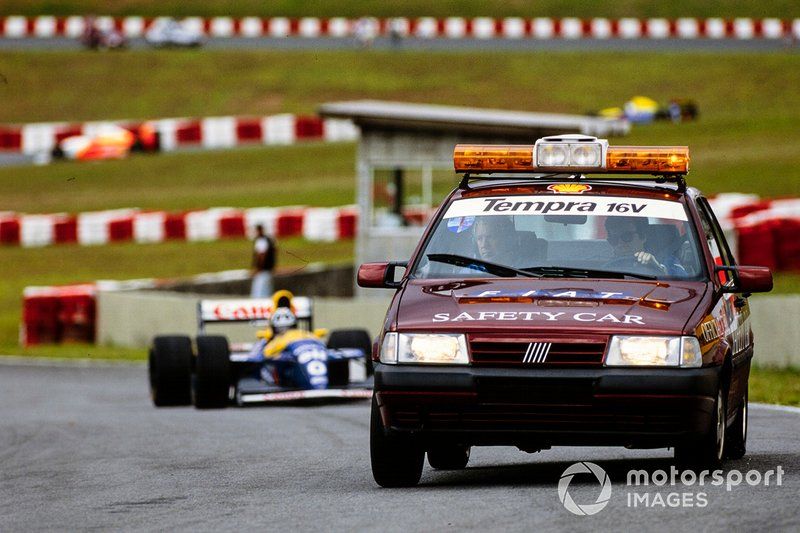The Formula 1 safety car is an important part of a race and can be frequently seen if there is a crash or an incident on the track. There are two types of safety car, including a physical car on the track or a virtual safety car (VSC), which can be deployed to control the cars whilst vehicles are recovered, or debris is removed from the track.
Compacting the field can produce added excitement to a race and can greatly change a team’s race strategy. The purpose of a safety car in F1 is to slow down the cars on the track until a situation is resolved, such as a car that needs to be retrieved or debris on the track.
What is a safety car in F1?
The safety car in F1 is a physical car which is brought onto the track to limit the speed of cars. It circulates at a specific speed so that marshals can come out safely to retrieve broken cars or pick debris off the track. The slower speed of the safety car bunches up the drivers behind the safety car, and no cars are allowed to overtake unless they are told to do so.
The safety car can also be used during a formation lap of the race if there is wet weather to slow down the drivers and prevent an accident.
When the safety car is deployed drivers will be shown yellow flags and large illuminated ‘SC’ screens flash on the side of the track to indicate that a safety car is in action and that they must slow down.
When all incidents have been cleared the safety car will return to the pitlane at the end of the lap and the drivers will be given the signal to continue racing at the start of the next lap.
When was the safety car first introduced?
The safety car was first used in Formula 1 in 1973 at the Canadian Grand Prix. A yellow Porsche 914 was brought onto the track after poor weather conditions caused various incidents. The use of the first safety car proved controversial after the driver placed his car in front of the wrong competitor, which caused a part of the field to incorrectly be one lap down. This resulted in it taking several hours to figure out the winner of the race.
The safety car was officially introduced in 1993, following trials at the French and British Grand Prix in 1992.
Photo by: Motorsport Images
The Fiat Tempra 16V Safety Car leads Damon Hill, Williams FW15C Renault
The safety car has been a variety of different models since it was first implemented in 1993. Between its implementation and 1995, the car changed brands throughout the…
Click Here to Read the Full Original Article at Autosport.com – Formula 1 – Stories…

